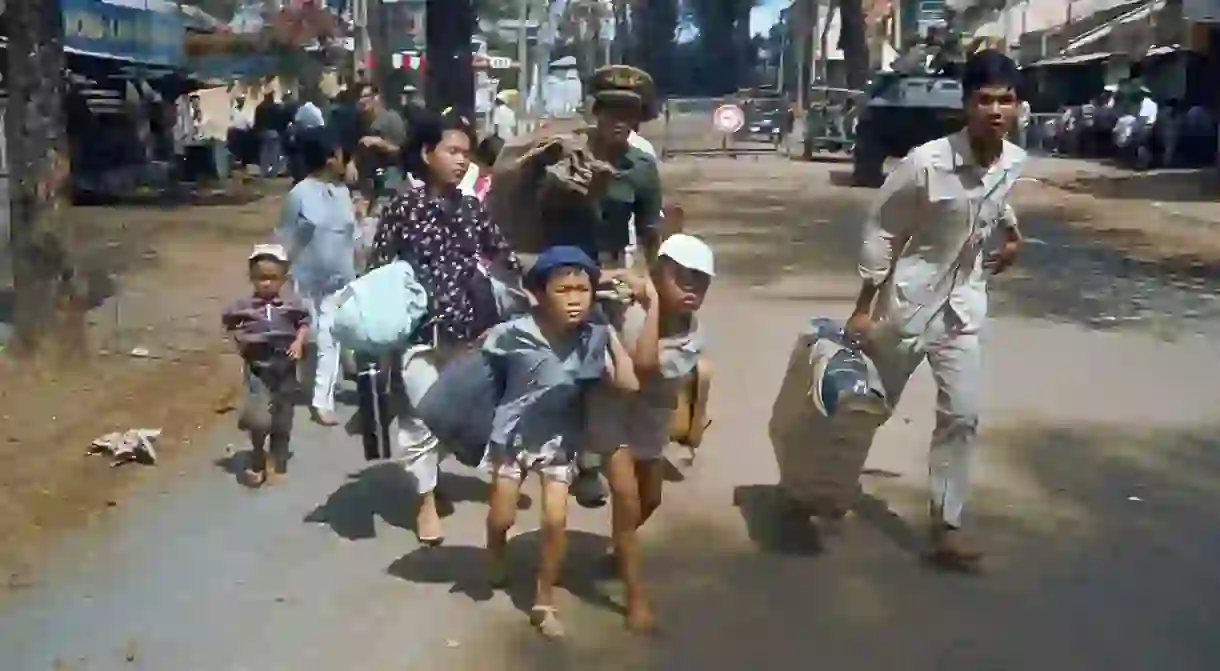These Vietnamese Refugee Writers Control Their Own Narratives

The Vietnam War prompted a wave of Vietnamese immigrants, mostly refugees, landing in the United States. This legacy has shaped the work of individuals writing about the experience of Vietnamese Americans.
Refugee writers wrestle with themes of displacement and generational trauma as they use the written word to understand their world. Through a variety of genres, the following writers contemplate what it means to be a Vietnamese refugee in America, giving further context to understanding where the USA is on immigration, racism and cultural identity today.
Việt Thanh Nguyễn
Author of the New York Times best-selling novel The Sympathizer (2015), Việt Thanh Nguyễn followed his initial success with 2017’s The Refugees and edited the anthology The Displaced: Refugee Writers on Refugee Lives, published in 2018. Joyce Carol Oates described Nguyễn as “one of our great chroniclers of displacement.”
Ocean Vuong
Night Sky With Exit Wounds by Ocean Vuong made waves when it was published in 2016. Winner of the T.S. Eliot Prize and the Whiting Award, Vuong’s collection tackles the legacy of war and forced displacement. “He manages the varied currents of English with muscled intuition,” notes the New Yorker of his poems. “His lines are both long and short, his pose narrative and lyric, his diction formal and insouciant. From the outside, Vuong has fashioned a poetry of inclusion.”
Thanhha Lai
Thanhha Lai’s work aims at bringing the story of Vietnamese refugees to young adults. Her debut novel Inside Out & Back Again (2011), an autobiographical story about a young Vietnamese refugee who moves to Alabama, won her the prestigious National Book Award for Young People’s Literature. Lai followed her success with 2015’s Listen, Slowly, a middle-grade novel about a young Californian girl visiting Vietnam with her grandmother to learn of their family history.
lê thị diễm thúy
lê thị diễm thúy is a poet, novelist and performer. The Gangster We Are All Looking For (2003) was originally written as a short story, published in the Massachusetts Review before being expanded for the novel. Her solo performance art, Red Fiery Summer and The Bodies Between Us, has allowed her to travel across America and Europe.
Thi Bui
Cartoonist Thi Bui’s 2017 graphic memoir, The Best We Could Do, tells the story of a family trying to prepare for motherhood, while Bui works to understand her own childhood. It’s also the story of Vietnam, breaking down the history of the Vietnam War through deeply personal memories. For younger readers, Bui illustrated A Different Pond (2017), written by Bao Phi.
Bao Phi
Before working on A Different Pond with Thi Bui, Bao Phi published two books of poetry, Sông I Sing (2011) and 2017’s Thousand Star Hotel. Phi came to fame as a slam poet, competing in the National Poetry Slam and appearing in HBO’s Def Poetry. Of Sông I Sing, The New York Times said, “In this strong and angry work of what he calls refugeography, Bao Phi wrestles with immigration, class and race in America at sidewalk level.”
Vu Tran
Dragonfish (2015) by Vu Tran is a lyrical and suspenseful novel. Tran defies genre expectations, using noir to explore the lives of immigrants. Of his own experiences he shared with LitHub, he says, “When I tell someone about my refugee experience, a story I’ve told countless times, I’m always aware that I have no real memory of it.” He is also a contributing writer to The Displaced: Refugee Writers on Refugee Lives.
Cathy Linh Che
Cathy Linh Che’s parents told her stories of their experience during the Vietnam War as she was growing up, but it was the physiological effects she witnessed in her parents that arguably most influenced her work. Her 2014 poetry collection, Split, explores a young woman’s experience of sexual assault complicated by the cultural conflict with her Vietnamese refugee parents. Che now works as the executive director of Kundiman, an organization aimed at nurturing the talents of Asian American writers.













